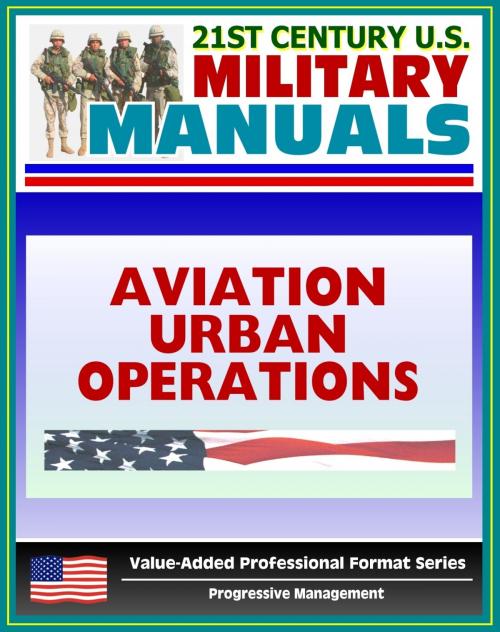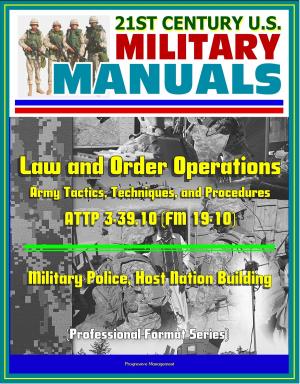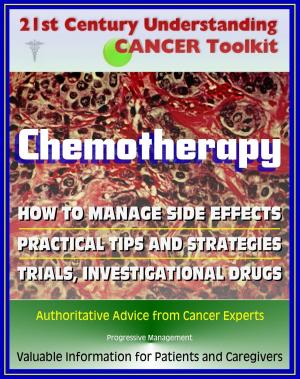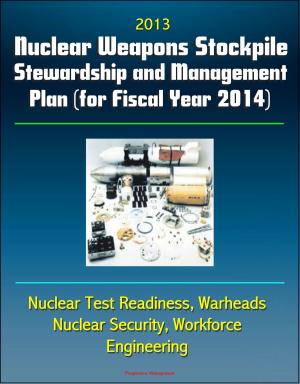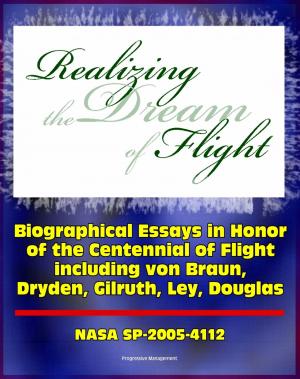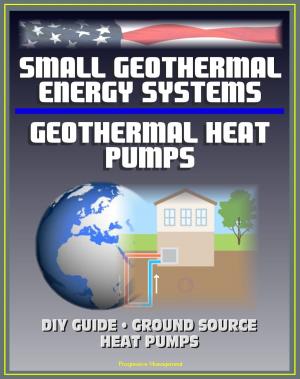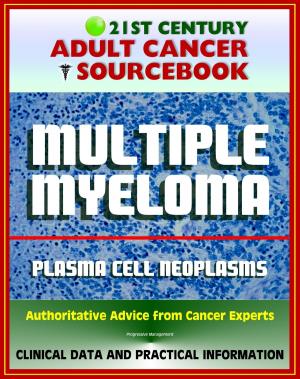21st Century U.S. Military Manuals: Multiservice Procedures for Aviation Urban Operations (FM 3-06.1) Fixed and Rotary Wing Aviation (Value-Added Professional Format Series)
Nonfiction, Science & Nature, Technology, Military Science, Social & Cultural Studies, Political Science| Author: | Progressive Management | ISBN: | 9781465970503 |
| Publisher: | Progressive Management | Publication: | September 9, 2011 |
| Imprint: | Smashwords Edition | Language: | English |
| Author: | Progressive Management |
| ISBN: | 9781465970503 |
| Publisher: | Progressive Management |
| Publication: | September 9, 2011 |
| Imprint: | Smashwords Edition |
| Language: | English |
Professionally converted for accurate flowing-text e-book format reproduction, the Multiservice Procedures for Aviation Urban Operations Field Manual (FM 3-06.1) covers the planning and conduct of air attacks in urban settings.
Some highlights of the contents:
"Urban areas generally function as centers of social, economic, industrial, and political power. These areas facilitate formal and informal civilian and military interaction, and can offer ready access to important resources, such as labor, water, technology, and information. Historically, United States (US) Forces have operated within, or in close proximity to urban areas. Demographic and population trends indicate that, in the future, a majority of the world's population will reside in urban areas. Trends toward increased urbanization increase the potential for US forces to operate in urban areas. US Army and US Marine Corps (USMC) doctrine recommends isolating and bypassing urban areas when possible due to the costs involved. Former Soviet Union doctrine also recommended avoiding large cities in favor of speed and maneuver. However, avoiding urban areas does not prevent an adversary from exploiting its defensive advantages. US Air Force (USAF) doctrine maintains that airpower's versatility and responsiveness allows the simultaneous application of mass and air maneuver, almost anywhere, from almost any direction. The speed, range, precision weapons, communications, command and control (C2), information gathering, and transportation capabilities of US military aircraft enable airpower to play a major, if not decisive, role in urban operations when proper tactics are employed. This is possible whether aviation operations are conducted independently, or in conjunction with the operations of friendly ground forces. Operations in Panama City, Baghdad, Mogadishu, Port Au Prince, Sarajevo, and Pristina, are a few examples where airpower has been influential in urban operations in the past. Aviation urban operations can be planned and conducted across the range of military operations. The two dominant characteristics affecting aviation urban operations are the existence of manmade construction and the presence of noncombatants. These operations may be conducted on or against objectives on a complex urban topology and its adjacent natural terrain. The compressed battlespace in the urban environment creates unique considerations for planning and conducting aviation operations. These include: (1) operations in urban canyons, (2) deconfliction in confined airspace, (3) restrictive rules of engagement (ROE), (4) difficulty in threat analysis, (5) an overload of visual cues, (6) the presence of noncombatants, (7) the potential for collateral damage, and (8) the increased risk of fratricide."
This manual is produced by Headquarters, US Army Training and Doctrine Command (TRADOC).
As a bonus, this reproduction includes FM-1, The Army Field Manual, a capstone manual containing the vision for the Army - sold separately for $5.99. FM 1 establishes the fundamental principles for employing Landpower. The most important of these are the Army's operational concept and the fundamentals that support it. They form the foundation for all Army doctrine. All Soldiers should understand and internalize them. FM 1 describes the American profession of arms, the Army's place in it, and what it means to be a professional Soldier.
This is a privately authored news service and educational publication of Progressive Management.
Professionally converted for accurate flowing-text e-book format reproduction, the Multiservice Procedures for Aviation Urban Operations Field Manual (FM 3-06.1) covers the planning and conduct of air attacks in urban settings.
Some highlights of the contents:
"Urban areas generally function as centers of social, economic, industrial, and political power. These areas facilitate formal and informal civilian and military interaction, and can offer ready access to important resources, such as labor, water, technology, and information. Historically, United States (US) Forces have operated within, or in close proximity to urban areas. Demographic and population trends indicate that, in the future, a majority of the world's population will reside in urban areas. Trends toward increased urbanization increase the potential for US forces to operate in urban areas. US Army and US Marine Corps (USMC) doctrine recommends isolating and bypassing urban areas when possible due to the costs involved. Former Soviet Union doctrine also recommended avoiding large cities in favor of speed and maneuver. However, avoiding urban areas does not prevent an adversary from exploiting its defensive advantages. US Air Force (USAF) doctrine maintains that airpower's versatility and responsiveness allows the simultaneous application of mass and air maneuver, almost anywhere, from almost any direction. The speed, range, precision weapons, communications, command and control (C2), information gathering, and transportation capabilities of US military aircraft enable airpower to play a major, if not decisive, role in urban operations when proper tactics are employed. This is possible whether aviation operations are conducted independently, or in conjunction with the operations of friendly ground forces. Operations in Panama City, Baghdad, Mogadishu, Port Au Prince, Sarajevo, and Pristina, are a few examples where airpower has been influential in urban operations in the past. Aviation urban operations can be planned and conducted across the range of military operations. The two dominant characteristics affecting aviation urban operations are the existence of manmade construction and the presence of noncombatants. These operations may be conducted on or against objectives on a complex urban topology and its adjacent natural terrain. The compressed battlespace in the urban environment creates unique considerations for planning and conducting aviation operations. These include: (1) operations in urban canyons, (2) deconfliction in confined airspace, (3) restrictive rules of engagement (ROE), (4) difficulty in threat analysis, (5) an overload of visual cues, (6) the presence of noncombatants, (7) the potential for collateral damage, and (8) the increased risk of fratricide."
This manual is produced by Headquarters, US Army Training and Doctrine Command (TRADOC).
As a bonus, this reproduction includes FM-1, The Army Field Manual, a capstone manual containing the vision for the Army - sold separately for $5.99. FM 1 establishes the fundamental principles for employing Landpower. The most important of these are the Army's operational concept and the fundamentals that support it. They form the foundation for all Army doctrine. All Soldiers should understand and internalize them. FM 1 describes the American profession of arms, the Army's place in it, and what it means to be a professional Soldier.
This is a privately authored news service and educational publication of Progressive Management.
